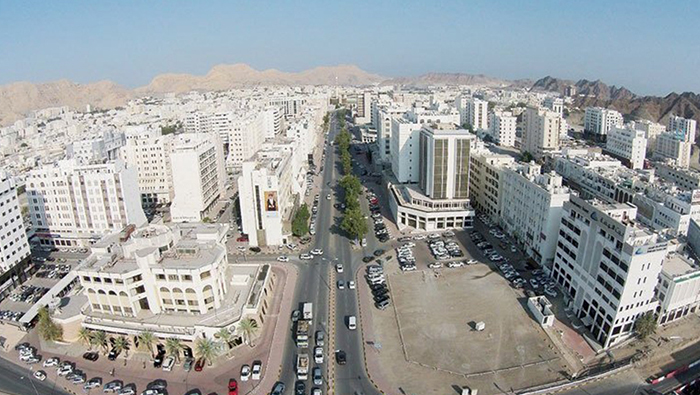
Muscat: After a difficult 2020, the outlook for Oman’s economy is improving, with gross domestic product (GDP) growth expected to rebound to 2.1 per cent in 2021 and to 3.1 per cent on average in 2022-24, according to a new report.
This is on the back of a combination of higher oil and gas output as well as the government’s wide-ranging structural reform programmes, the National Bank of Kuwait (NBK) said in its report.
Short-term headwinds are expected, however, from the large fiscal consolidation being implemented this year to address the deficit.
In the energy sector, the further unwinding of OPEC+ supply cuts from August should see Oman’s crude production increase along with a boost in natural gas production (associated and non-associated), helped by output gains in the key Ghazeer and Khazzan fields, and resulting increases in condensate volumes will more than compensate for this year’s overall decrease in oil output.
The hydrocarbon sector GDP is forecast to grow by 2.8 per cent in 2021 and by 3.6 per cent on average in 2022-2024, the report said.
Non-oil activity, meanwhile, has benefitted from a post-COVID bounce (a travel ban was lifted in September for vaccinated individuals), which together with the government's strong commitment to reform and diversification (under both Vision 2040 and the new Five-Year Plan running 2021-25), has provided for a more constructive outlook.
After falling by an estimated 4.4 per cent last year, non-oil GDP is forecast to rise 1.6 per cent in 2021 as domestic and external demand start to recover, The NBK report said.
In the medium term, non-oil growth should pick up to above 3 per cent by 2024 as the benefits of the structural reform programme start to materialise more fully. As well as stabilising the public finances, measures include boosting labour market flexibility, private sector jobs and female participation, which should lift productivity, reforming state-owned firms (eventually leading to privatisation) and improving the business climate.
Targeted sectors for development include hi-tech industry, agriculture, transport, logistics and tourism, with an additional focus on green initiatives.
Moreover, the $7 billion 230,000 barrels per day (bpd) Duqm refinery (more than 80 per cent complete) will attract significant new investment in ancillary activities and surrounding infrastructure, the report said.
Fiscal deficit to narrow sharply
Faced with a sharp widening of the deficit last year, the government rolled out the Medium Term Fiscal Plan in 2020 to restore fiscal stability and balance the budget by 2025. As well as VAT, measures already implemented include cuts to utility subsidies and capital outlays as well as reductions in the public sector wage bill (though social safety nets will be expanded and better targeted to support vulnerable Omanis).
These measures, together with higher oil prices, helped narrow the deficit sharply by 46 per cent year-on-year to a pro-rated 5 per cent of GDP by August.
“We expect the deficit to shrink further to 3.6 per cent by year-end from 10.5 per cent in 2020. While such a sharp near-term fiscal adjustment carries risks to economic growth, it has already yielded some dividends: S&P and Moody’s both upgraded their outlooks on Oman, and the government could even be on track for its first rating upgrade since 2007,” NBK said in its report.
Fiscal consolidation and broader reforms would also help to reverse the increase in public debt (to 80 per cent of GDP in 2020 from 5 per cent in 2014) due to both domestic and external debt issuance, potentially bringing it down to 73 per cent of GDP by 2024.
Meanwhile, consumer prices fell 0.9 per cent in 2020 (average) but are forecast to rise 1.5 per cent this year following the introduction of a 5 per cent Value Added Tax (VAT) in April and amid increasing demand and international food prices. As the initial impact of VAT fades though, inflation should slow to 1.4 per cent on average in 2022-24.
External position to strengthen
The current account deficit widened to 12 per cent of GDP in 2020 from 5.5 per cent in 2019, on the back of lower oil exports. It should, however, narrow to 1.0 per cent of GDP by 2024 helped by higher oil prices and as the government’s diversification and Omanisation drive support manufacturing exports and reductions in remittances, respectively. Currently, elevated energy prices are behind much of the recent improvement in the external balance.
Successful reform programme
Higher oil prices and the accelerated pace of reforms are expected to boost non-oil growth and cut Oman’s long-standing twin fiscal and external deficits sharply by 2024, reducing economic vulnerabilities. However, a drop in energy prices could upend progress, with negative spillovers across the economy.
Renewed pandemic-linked demand weakness is also a risk, as is the sizable and rapid fiscal adjustment, which will affect near-term growth. The reforms themselves could also meet with resistance and have to be scaled back or slowed down.